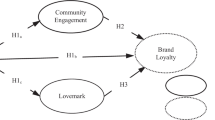Abstract
The unique characteristics of the first generation tourists and the nature of their interactions with the host community leads to the formation of enduring stereotypes. The first wave of mass tourists sees themselves as innovators, worldly, outward looking, risk takers who are different and somehow better than other members of society. Yet, in reality, they are relative latecomers to the world of international tourism, causing members of the receiving community to perceive them as laggards, inward looking individuals who are culturally and socially introverted, unworldly and resistant to change. The situation is exacerbated by package tour participation which is the typical way any new markets begins to travel. Unfortunately, packages produce a highly mediated experience between host and guest that intensify the sense of outsidedness felt by each group, which in turn create stereotypes.
Similar content being viewed by others
Further Reading
Cohen, E. (1988). ”Traditions in the Qualitative Sociology of Tourism,”. Annals of Tourism Research, 18, 29–46.
Neal, C., Quester, P., & Hawkins, D. (2000). Consumer Behavior: Implications for Marketing Strategy. Sydney: McGraw-Hill.
Author information
Authors and Affiliations
Corresponding author
Rights and permissions
About this article
Cite this article
McKercher, B. The Roots of Stereotypes about Tourists. Soc 45, 345–347 (2008). https://doi.org/10.1007/s12115-008-9113-5
Published:
Issue Date:
DOI: https://doi.org/10.1007/s12115-008-9113-5




